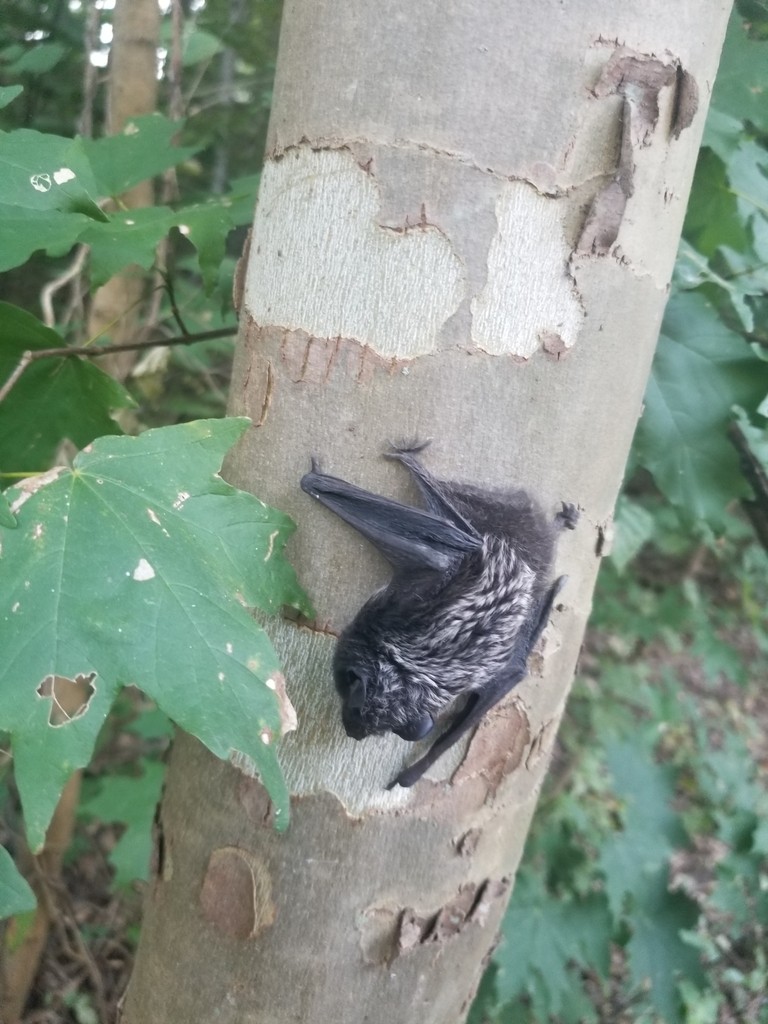Silver-haired bat
A species of Silver-haired bat Scientific name : Lasionycteris noctivagans Genus : Silver-haired bat
Silver-haired bat, A species of Silver-haired bat
Botanical name: Lasionycteris noctivagans
Genus: Silver-haired bat
Content
Description People often ask General Info
Description
The silver-haired bat is a medium-sized bat that prefers life as a solitary creature and is typically found roosting very high up in trees in forests. It is considered one of the slowest-flying of all the North American bats. Its scientific name, Lasionycteris noctivagans, is derived from Greek and Latin words that mean "night wandering shaggy bat."
Size
9 - 12 cm
Life Expectancy
4-12 years
Nest Placement
Cavity
Feeding Habits
Silver-haired bat predominantly eat soft-bodied insects, especially moths, plus spiders and harvestmen. They typically forage just above water and in clearings, relying on slow, agile flight to detect prey nearby.
Habitat
This forest inhabitant is known to occur from southeastern Alaska in summer to northeastern Mexico in winter and is found in xeric habitats at low elevations during seasonal migrations. They often roost in tree cavities or in bark crevices on tree trunks, especially during migration. However, some individuals seem to overwinter in buildings, which may allow them to spend the winter in places that would otherwise be too cold for them. 
Dite type
Insectivorous
People often ask
General Info
Feeding Habits
Bird food type
Behavior
Silver-haired bat exhibits nocturnal and migratory behavior, traveling long distances from winter hibernation sites to summer roosts. It is insectivorous, hunting during flight at night. This species generally lives a solitary life, except during migration and hibernation when they form modest groups. Uniquely, silver-haired bat give birth while hanging upside down.
Distribution Area
Lasionycteris noctivagans is found in Bermuda, Canada, Mexico, and the United States. This forest inhabitant is known to occur from southeastern Alaska in summer to northeastern Mexico in winter and is found in xeric habitats at low elevations during seasonal migrations. In Missouri, reproduction occurs in the northern dissected plains region, but reproductive females are believed to be absent from the southern Ozark highlands in the summer. 
Species Status
In addition to the hoary bat (Lasiurus cinereus) and eastern red bat (Lasiurus borealis), the silver-haired bat is one of the three tree bat species most commonly killed at wind energy facilities (over 75% of the mortalities). Like all bats, silver-haired bats are vulnerable to population threats because of their inherently low reproductive rate. 
Scientific Classification
Phylum
Chordates Class
Mammals Order
Bats Family
Evening birds Genus
Silver-haired bat Species
Silver-haired bat 